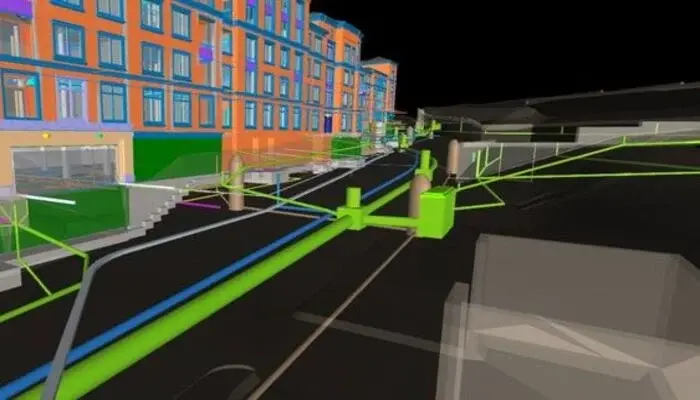Top 10 BIM Software for Civil Engineers (2026)
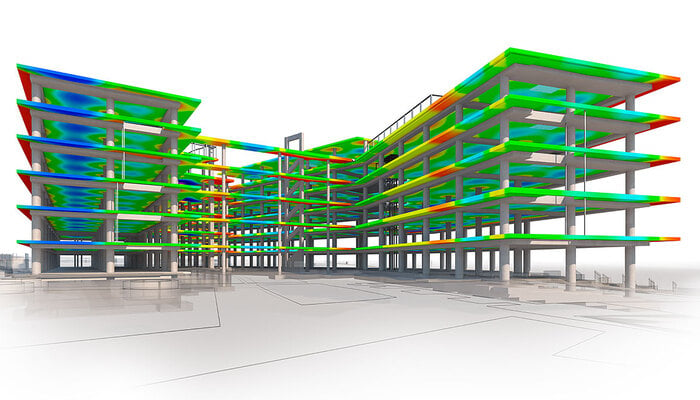
Table of Contents
Building Information Modelling (BIM) is a digital process that has gained a lot of prominence in civil engineering lately. It is a collaborative approach to designing, constructing, and managing projects. It involves creating and using a detailed digital representation of buildings, including 3D models, data, and information about the project. BIM offers real-time collaboration between different stakeholders involved in the project, thus reducing conflicts and costly revisions.
Today, BIM has become an integral part of civil engineering projects and offers numerous benefits to engineers. Its ability to create a digital twin of a construction project is one such advantage that offers valuable insights throughout the project’s lifecycle. Several BIM software for civil engineers are available in the market that you can use to design and manage projects.
This blog will cover the benefits of BIM and the best BIM software for civil engineers.
What is BIM for Civil Engineers?
BIM is a collaborative process that digitally constructs the most accurate model of a building. It can be used for planning, designing, constructing, and managing a facility. All stakeholders involved in a project can visualise what will be built, but all in a simulated environment. BIM also helps identify potential design, construction, and operational issues before the construction phase.
A design created through BIM contains precise geometry and relevant data that supports the design, fabrication, procurement, and construction activities. Once the project is completed, the detailed model can also be used for maintenance.
Applications of BIM in Civil Engineering
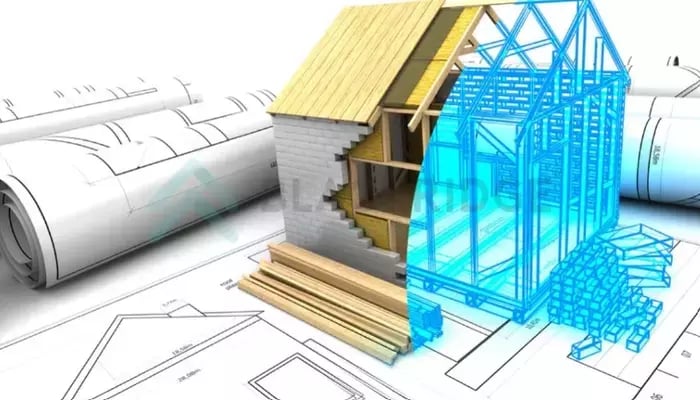
BIM is a powerful tool that has revolutionised the civil engineering field. It encompasses a collaborative process that involves creating and managing a digital representation of a project's physical and functional characteristics. Its ability to integrate data and streamline processes has made it an indispensable tool in the industry. Have a look at the applications of BIM in civil engineering:
1. Design and Visualise
BIM allows civil engineers to create multidimensional models of projects. It helps visualise the buildings, bridges, and roads better and identifies all potential design clashes and issues in the design process. It’s not just limited to design purposes, you can also use BIM for facility management - provide detailed information about the building’s components for easy repair and maintenance.
2. Improved Collaboration
One of the biggest challenges in the AEC (Architectural, Engineering and Construction) industry is stakeholder collaboration. BIM encourages collaboration among all the stakeholders involved in the construction project by providing them with a common platform to interact, efficiently reducing potential conflicts during the construction phase.
3. Data Integration
BIM aids in integrating various types of data into a single model. This data can be related to architectural design, structural calculations, material specifications, and project cost estimations. With the centralised data readily available to all stakeholders, well-informed decisions can be made.
Read more: 6 Emerging Technologies Transforming the Construction Industry Today
4. Clash Detection
BIM software detects clashes and conflicts between different components automatically. For instance, it can identify a structural beam interfering with ductwork. This early clash detection helps prevent costly errors during the construction phase. You can also analyse the environmental impact of the project and optimise your design for energy efficiency, water conservation, and sustainable practices.
5. Project Cost Estimation
You can also get accurate cost estimation and budgeting through BIM models. You can track costs in real-time by linking cost data to the digital model, making it easier to manage and stick to budget and reduce cost overruns. An up-to-date digital record of the project can be used for regulatory compliance, as-built documentation, and future renovation and maintenance.
Benefits of BIM for Civil Engineers

As the construction industry is growing and evolving, the need for proper and efficient project management tools has arrived. BIM is a powerful tool with numerous applications in civil engineering and construction projects. For instance, BIM was employed during the construction of Burj Khalifa, the world’s tallest skyscraper, to coordinate the structural engineering, MEP (Mechanical, Electrical and Plumbing) systems, and architectural elements.
BIM helps represent a building’s physical and functional characteristics digitally. You can visualise your design in 3D, enabling you to identify potential issues and errors in the design process. BIM can be used to track progress and manage resources in the construction process. Take a look at the benefits of BIM in civil engineering in detail.
1. Increased Collaboration and Coordination
With BIM software, all stakeholders involved in the project can collaborate in real time. The tool works as a shared digital workspace where all stakeholders have access to the same information, at the same time. Thereby, most communication errors can be eliminated. Also, with access to the designs, all stakeholders can review and suggest iterations in actual time, resulting in a more coordinated construction process.
2. Improved Project Quality
BIM software for civil engineers allows for detailed visualisation and simulation of the construction process. Apart from identifying costly mistakes, you can also find safety hazards to reduce the risks of accidents during the construction phase. BIM allows you to plan and coordinate more accurately to create better-quality designs and finished projects. Besides, you can also ensure that all building components and systems meet the standard requirements.
3. Reduced Construction Time & Cost
You can simulate the construction process and identify potential problems with BIM. This reduces the risk of costly errors and aids in accurate cost estimation. BIM application enables off-site fabrication components, effectively reducing construction time.
4. Enhanced Sustainability
Sustainability considerations have become essential in construction. The civil engineering design software lets you evaluate building components and their environmental impacts. This lets you identify opportunities to reduce energy consumption and waste during construction. BIM models that you create can be used for the project’s life cycle assessment, considering the building’s environmental impact over its lifespan.
5. Enhanced Facility Management
Lastly, you can use BIM software to manage facilities and systems after project completion. The digital BIM models provide comprehensive project information that you can use to plan maintenance and manage assets and space. The 3D models can also be used to evaluate the building's performance and suggest new ways to make it more sustainable and efficient.
Is Learning BIM a Good Career Choice for Civil Engineers?
Now that you know the benefits of BIM for civil engineers, you must wonder if it is a good career choice. Civil engineers are dissatisfied with tiring working hours, low salaries, and overall professional growth. Well, the construction industry has undergone significant changes in recent years, opening many career opportunities. One such option is building a career in BIM.
With BIM skills, you move from the construction part of the project life-cycle to its collaboration part. This shift reduces your workload and ensures better salary growth as BIM skills are in high demand.
List of Top 10 BIM Software Tools
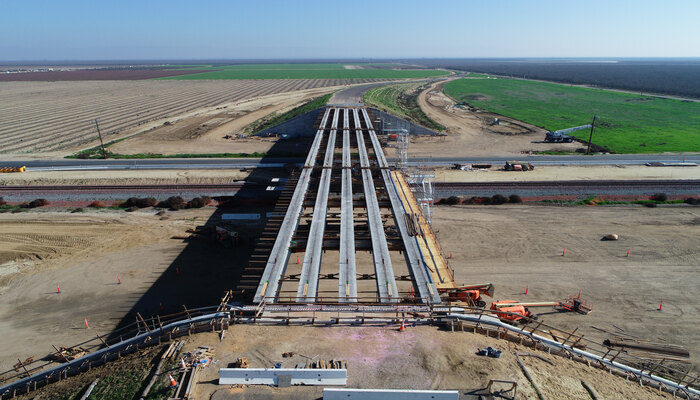
The California High-Speed Rail project employed BIM to plan and design its rail infrastructure, including stations and bridges. BIM was crucial for coordinating various disciplines and ensuring the high-speed rail system's efficiency. The real-life example demonstrates the diverse applications of BIM in civil engineering and construction projects. BIM has revolutionised the AEC industry by improving collaboration, reducing errors, and enhancing overall project efficiency.
With that, the BIM software list for civil engineers is also getting bigger, and many software have become popular among professionals. However, when you choose BIM software for civil engineers, you must consider factors such as the scale of the projects, collaboration required, and compatibility with other software your team uses. Without further ado, take a look at the best BIM software for civil engineers:
1. Revit
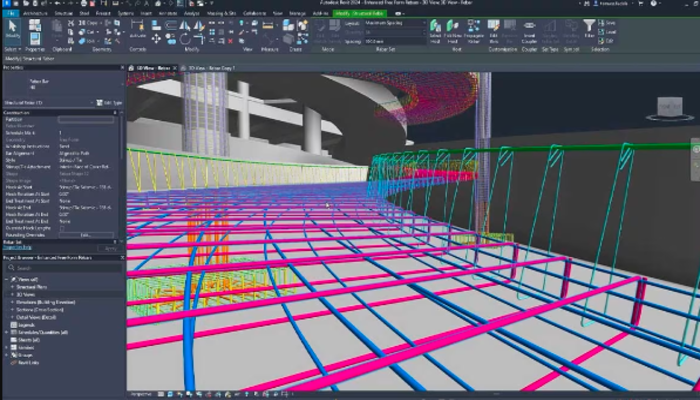
One of the best software for civil engineering, Revit has numerous features benefitting all stakeholders in the AEC industry. Autodesk’s Revit is an all-encompassing BIM software with collaboration as a strong point - multiple stakeholders can work on the same project simultaneously. Its parametric modelling capabilities help streamline design changes efficiently. Photorealistic visualisation is also possible in Revit with plug-ins like Enscape and V-ray.
2. Civil 3D
A part of the AutoCAD family, Civil 3D is specifically tailored to meet civil engineering design needs. Autodesk also develops civil 3D software and proves to be a helpful tool to design roads, highways, land development, and drainage systems. Its features include 3D modelling, visualisation, and analysis, making it an imperative tool for civil engineers. It also has robust documentation capabilities and can be used for surveying tasks. Undoubtedly, this is one of the most powerful 3D modelling software tools every civil engineer should learn.
If you want to learn Civil 3d professionaly, you can checkout our Civil 3d courses and training programs in India & USA!
3. Tekla Structures

Developed by Tekla, Tekla Structures is a specialised BIM tool for structural engineering, particularly for concrete and steel structures. Civil engineers often design and build complex projects like tunnels and bridges, and Tekla Structures is renowned for its powerful detailing and clash detection features. With this civil design software, you can also identify the appropriate material. So in case, you want to learn Tekla Structures, you can checkout our best online courses.
Read more: What are ‘Oceanscrapers’?
4. Bentley Systems
Bentley Systems is an American-based software development company that offers several BIM solutions specially tailored for civil engineering. Its range of software products includes:
- MicroStation: It is CAD software with strong 3D modelling capabilities.
- OpenRoads Designer: Specialises in road design and analysis.
- ProjectWise: Facilitates project collaboration and document management.
5. ArchiCAD

Developed by Hungary-based Graphisoft, ArchiCAD has recently gained popularity among civil engineers for its powerful modelling capabilities. ArchiCAD can be used for projects of all sizes, and it comes with a powerful set of built-in tools. You can use the software to design, visualise, document, and deliver projects.
6. InfraWorks
InfraWorks, developed by Autodesk, is primarily used during the early stages of infrastructural design. It helps create conceptual models, conduct feasibility studies, and visualise their impact on the environment. You can use it to aggregate data to generate information-rich models, project and evaluate various design concepts, and analyse traffic flow through intersections to visualise impact.
7. Allplan Engineering
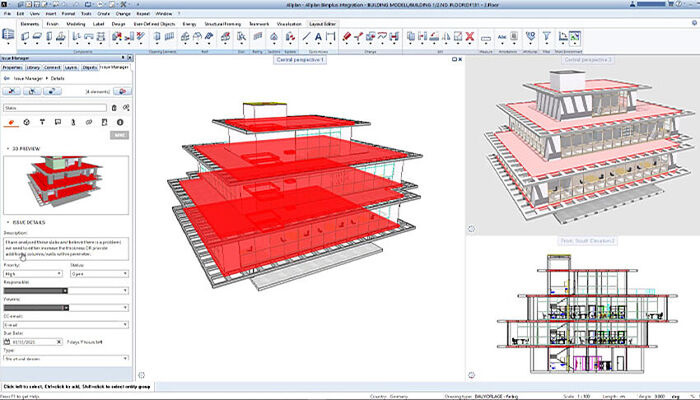
Allplan Engineering is a popular BIM software among civil engineers that offers a comprehensive range of tools to design and manage projects and estimate costs. The software helps integrate design and construction processes throughout the project completion. Allplan Engineering is a powerful tool that works across various disciplines and can be used by civil engineers, architects, and even interior designers.
8. OpenBuilding Designer
Another offering from Bentley, OpenBuildings is a BIM software for civil engineers that can be used for multiple applications – architectural, mechanical, structural, and electrical systems design, construction documentation, and visualisation. It helps communicate design intent effectively, bridging barriers between all stakeholders. You can also use the software to simulate and analyse the design in real-world scenarios and for documentation.
9. Vectorworks Landmark
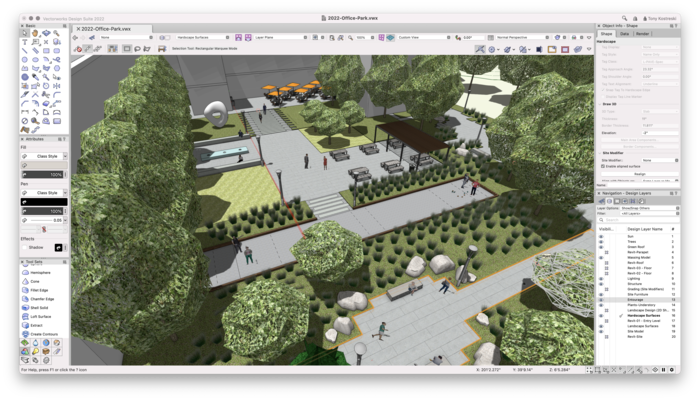
Vectorworks Landmark is the ultimate software for landscape design. It offers tools for site modelling, irrigation design, and plant database management. With this tool, you can link all your drawings, details, models, and even schedules. If you make a particular change in your drawings, it will be reflected everywhere in the design, reducing manual efforts. You can use this tool to calculate construction costs and material takeoffs and track sustainability goals.
10. Navisworks
Navisworks, a BIM software by Autodesk, offers a holistic review of models and data for project planning. When it comes to functionality, it is similar to Revit and comes in three variations: Freedom, Simulate, and Manage.
- Navisworks Freedom: Ideal or visualising the design and model. It is sans the clash detection feature.
- Navisworks Manage: Ideal for simulating and analysing the project for reviews. This version comes with the clash detection feature.
- Navisworks Simulate: Ideal for managing workflow. This version has all the features of Navisworks Manage, except the clash detection feature.
Also Read - 7 Top BIM Software To Learn As An Virtual Design And Contruction(VDC) Engineer
Top 3 BIM Courses for Civil Engineers in 2025
BIM Professional Course for Civil Engineers by Novatr
Build a future-ready career in construction with Novatr’s BIM Professional Course for Civil Engineers, a hands-on, industry-aligned program designed to help you master Building Information Modeling (BIM) from design to execution. Learn how top global firms use BIM to plan, coordinate, and deliver smarter, more efficient projects, while gaining the technical confidence to work on large-scale infrastructure and building developments.
Here’s what you’ll learn:
- 5+ industry softwares, including Autodesk Revit, Navisworks, Autodesk Construction Cloud: Docs, Coordination & Collaboration.
- Master essential plugins such as EF-Tools, DiRoots.One, pyRevit, ProSheets, Issue and Model Checker for Revit to automate documentation and improve precision.
- Learn complete BIM workflows, from digital design development, estimation & BOQ, and information modeling to clash detection, sequencing, and multidisciplinary coordination.
- Get hands-on experience working on real commercial and residential projects following ISO 19650 standards, guided by mentors from the global AEC industry.
- Develop professional construction documentation, audits, and deliverables aligned with international BIM practices.
Earn globally recognized certifications:
- Novatr Course Certificate, signed by the Academic Director.
- Autodesk User Certification, validating your command over Autodesk tools.
- NSDC Certificate, officially recognizing your BIM expertise.
- Optional Specialization Certificates, for learners who wish to deepen their skills in niche BIM applications.
BIM Ready (Arch + Structure) by Techno Struct Academy
The BIM course offered by Techno Struct Academy in Delhi caters to civil engineers seeking to specialize in architectural and structural aspects within the BIM domain. This program offers comprehensive coverage of BIM tools, processes, and workflows specifically tailored for architectural and structural design applications, providing participants with a thorough understanding of these crucial areas.
Students enrolled in this BIM course for civil engineers acquire practical experience in utilizing BIM tools for architectural and structural design functions. Armed with these hands-on skills, civil engineers are equipped to utilize BIM for precise structural analysis, optimizing designs, and fostering smooth collaboration with fellow project collaborators.
BIM Course by Capricot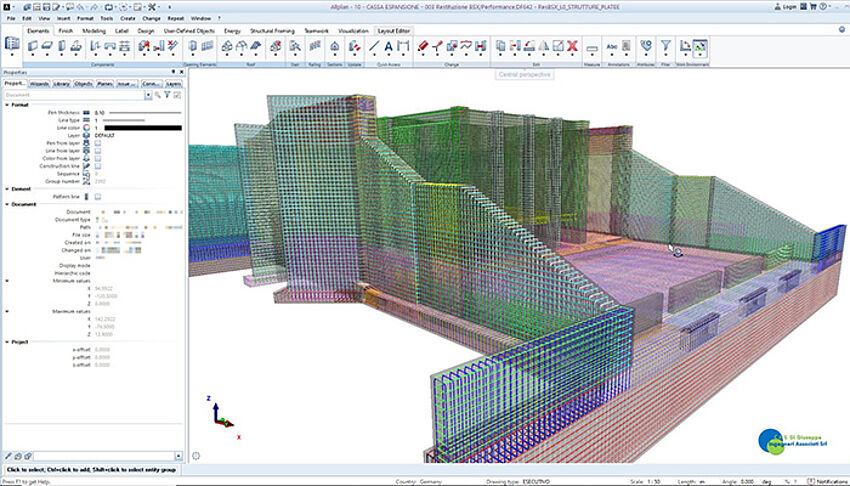
Capricot presents a holistic BIM course that caters to civil engineers across various proficiency levels. Whether you're starting afresh and seeking to grasp the basics of BIM or you're a seasoned professional aiming to enhance your expertise, Capricot's course is tailored to accommodate individuals at every phase of their career journey.
This program seamlessly integrates theoretical learning with hands-on practice, enabling participants to grasp the fundamental concepts and effectively apply them in practical settings. It encompasses a wide spectrum of BIM topics pertinent to civil engineers, spanning from modelling and coordination to clash detection, project management, and fostering collaborative teamwork.
Conclusion
BIM has transformed the landscape of civil engineering, offering many benefits that have become indispensable in the construction industry. Its capacity to create a comprehensive and collaborative digital environment has helped create project designs efficiently and reduce costly errors and delays during construction. From improved collaboration and clash detection to accurate cost estimation, BIM for civil engineers empowers them to make well-informed decisions, streamline processes, and ultimately deliver a cost-effective and sustainable solution.
Several BIM software for civil engineers are available in the market and all of them come with some good features. If you want to learn the software mentioned above and advance your career, then enrol today for civil engineering software courses.
Take your first step towards becoming a BIM civil engineer with the BIM professional course for civil engineers offered by Novatr. Learn 10+ BIM software with industry workflows in just 7 months.
You can also head to our recourses page to gain more insight into BIM for civil engineers and get advice on how to skyrocket your career.
FAQs
1. What is the best BIM software for civil engineers?
There is no single “best” tool, but Revit and Civil 3D are often the top choices for civil engineers. Revit is best for structural components, bridges, and building-linked infrastructure, while Civil 3D is ideal for roads, grading, and land development. Most firms use a combination of both, along with Navisworks for coordination and clash detection on large projects.
2. Which BIM tools are most commonly used in civil engineering projects?
On most civil projects, engineers work with a stack of tools rather than just one. Civil 3D, Revit, Navisworks, InfraWorks, and Bentley tools like OpenRoads Designer are widely used for design and coordination. Tekla Structures, Allplan Engineering, and BIM 360 or similar CDE platforms are also common on bridge, highway, and large public infrastructure projects.
3. What is the difference between Revit, Civil 3D, and Navisworks for civil engineers?
Revit focuses on BIM modeling for buildings, structures, and related components. Civil 3D is tailored for civil infrastructure, roads, grading, corridors, and pipe networks. Navisworks is not a design tool; it is used to review, combine, and coordinate models from Revit, Civil 3D, Tekla, and others. Civil engineers often design in Revit/Civil 3D and then use Navisworks for clash detection and 4D simulations.
4. Which BIM software is best for infrastructure projects like roads and bridges?
For road and highway projects, Civil 3D, InfraWorks, and OpenRoads Designer are among the best options. For bridges and complex structures, civil engineers often use Revit, Tekla Structures, Allplan Engineering, or STAAD-linked workflows. In most major infrastructure jobs, models from these tools are combined and coordinated in Navisworks or a similar platform to manage clashes, phasing, and construction planning.

 Thanks for connecting!
Thanks for connecting!





.png)

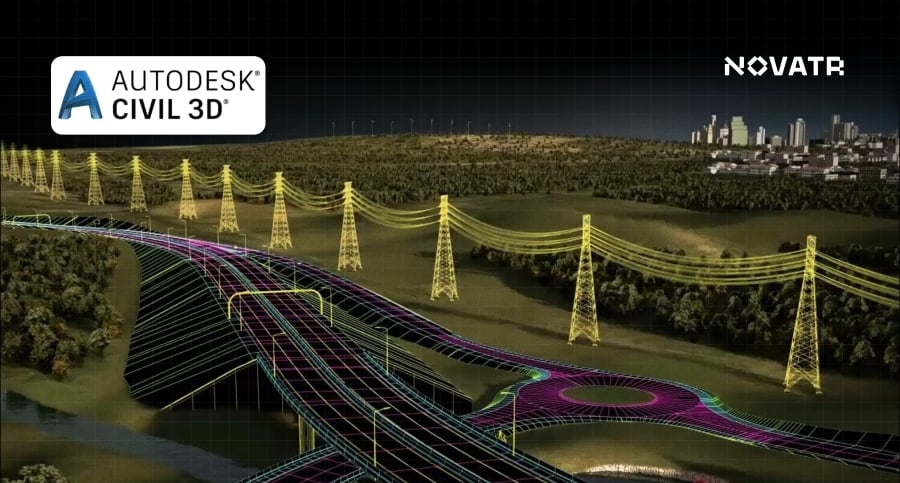
-1.png)
